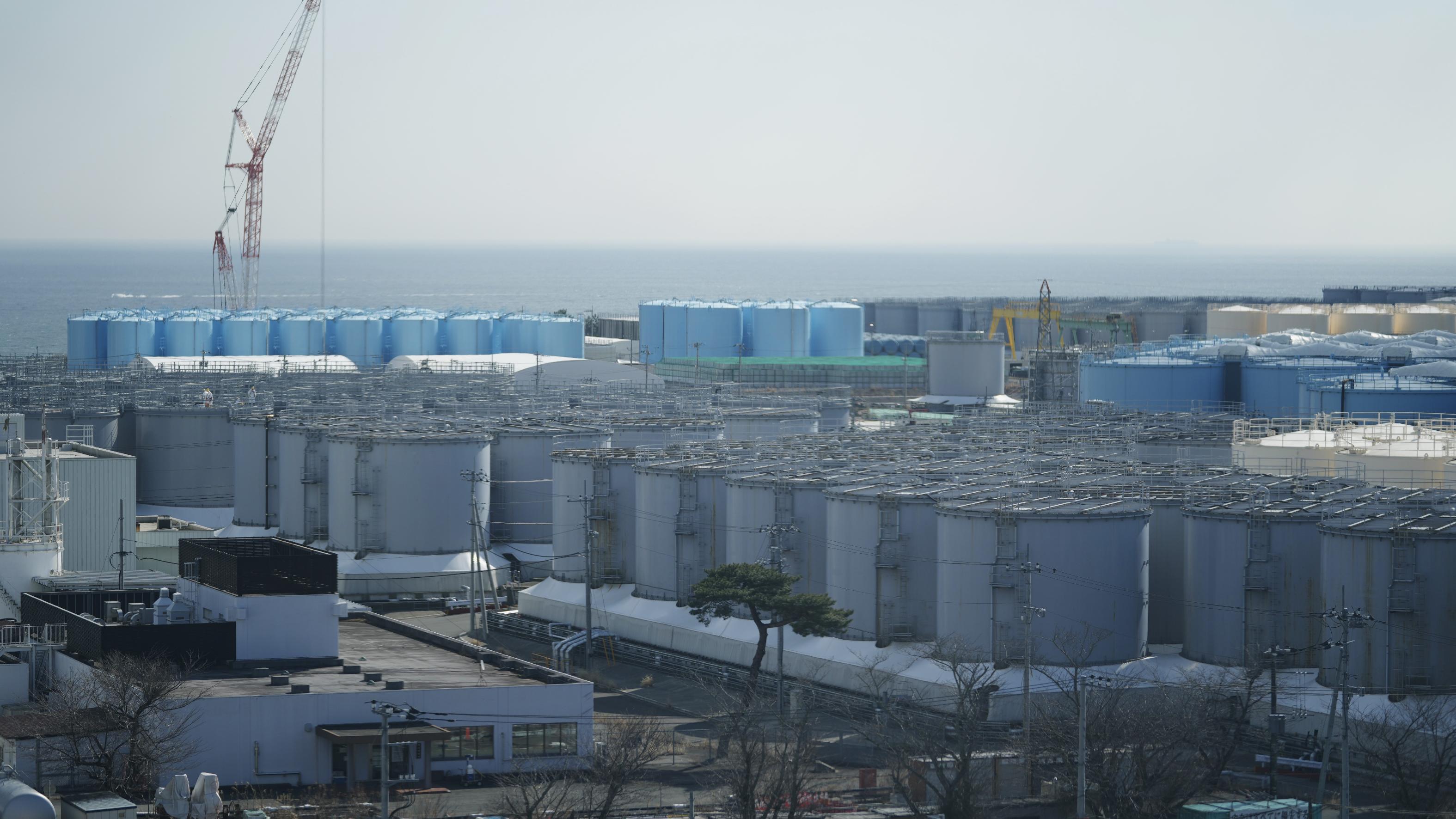 Tanks storing treated radioactive water after it was used to cool the melted fuel are seen at the Fukushima Daiichi nuclear power plant, run by Tokyo Electric Power Company Holdings, in Okuma town, northeastern Japan, on March 3, 2022. (PHOTO / AP)
Tanks storing treated radioactive water after it was used to cool the melted fuel are seen at the Fukushima Daiichi nuclear power plant, run by Tokyo Electric Power Company Holdings, in Okuma town, northeastern Japan, on March 3, 2022. (PHOTO / AP)
TOKYO - The Japanese parliament on Wednesday enacted legislation to allow nuclear reactors in the country to be operated beyond the current limit of 60 years in a push to cut carbon emissions and ensure stable electricity supplies.
The newly approved bill allows nuclear plants to operate for longer than 60 years if approved by the industry minister and is subject to regular inspections by the Nuclear Regulation Authority.
The legislation on promoting the use of carbon-free energy revised five relevant laws, including the electricity business law, the nuclear reactor regulation law, and the nuclear energy basic law
ALSO READ: Japan not considering new nuke plants despite energy security
After the 2011 earthquake-triggered tsunami disaster at the Fukushima nuclear power plant, Japan introduced stricter safety protocols that limit the operating life of nuclear reactors to 40 years in principle, which can be extended to up to 60 years.
Under the new legislation, nuclear reactors may be granted additional operating years in effect as their offline periods will not be counted against their total service time provided the periods are due to reasons beyond a utility's control, such as safety reviews needed for a restart and court-ordered suspensions.
The legislation on promoting the use of carbon-free energy revised five relevant laws, including the electricity business law, the nuclear reactor regulation law, and the nuclear energy basic law.
ALSO READ: IAEA mustn't be hoodwinked over Fukushima
In addition, under the amended nuclear reactor regulation law, Japan's Nuclear Regulation Authority will check the condition of reactors and related facilities at least every 10 years after 30 years of operating to ensure the safety of old facilities.


